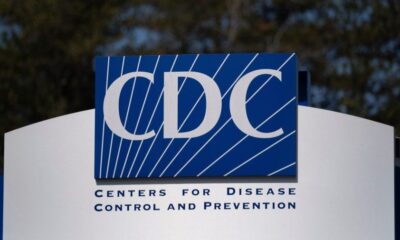Health
Monitor Your Blood Pressure: Key Steps for Healthier Living

High blood pressure, or hypertension, affects nearly half of all adults in the United States, posing significant health risks. According to the Centers for Disease Control and Prevention, hypertension was a contributing factor in over 664,000 deaths in the U.S. in 2023. Dr. Rachel Goodman, Chief Cardiology Fellow at Tufts Medical Center, emphasizes the critical need for regular monitoring to mitigate these risks.
Understanding Blood Pressure
Blood pressure measures the force exerted by circulating blood on the walls of blood vessels. This dynamic process occurs during two phases of the heart’s function. When the heart contracts, it pumps blood into the arteries, creating pressure known as systolic pressure. Conversely, when the heart relaxes, the pressure decreases, termed diastolic pressure. Hypertension arises when there is consistently elevated pressure in the blood vessels, often due to their stiffening, which hampers their ability to expand appropriately.
Dr. Goodman notes that regular blood pressure checks are vital for early diagnosis and treatment of hypertension. This proactive approach can significantly reduce the risk of severe health conditions, including stroke, heart attack, heart failure, and kidney disease. For those without a hypertension diagnosis, annual blood pressure checks are advisable. Individuals diagnosed with hypertension should monitor their blood pressure regularly at home, as directed by their healthcare providers.
Home Monitoring: Best Practices
For effective management of high blood pressure, daily monitoring at home is often recommended. Here are key considerations for obtaining accurate readings:
**Monitor Type**: The American Heart Association (AHA) advises using an automatic, cuff-style monitor for best results. Wrist or finger monitors tend to be less reliable.
**Cuff Size**: Proper cuff sizing is crucial. Cuffs are available in various sizes: small (8 to 10 inches), regular (10 to 12.8 inches), large (12.8 to 16 inches), and extra-large (16 to 22 inches). Utilizing the incorrect size may lead to inaccurate readings. Research indicates that a regular cuff can yield lower readings for individuals with smaller arms, while it can produce higher readings for those needing larger cuffs. Therefore, selecting the right cuff size is essential for precise measurements.
**Validation**: Before purchasing a home monitor, check its accuracy validation at validatebp.org. A study highlighted that only 16% of upper arm cuff devices sold in the U.S. have been validated for accuracy. Bringing your monitor to a healthcare appointment annually can help ensure its readings are reliable.
**Measurement Timing**: For optimal results, the AHA recommends taking blood pressure measurements at the same time daily and adhering to the following guidelines:
1. Sit quietly for five minutes before taking a reading.
2. Position your arm at heart level and avoid talking during the measurement.
3. Take multiple readings (at least two) and average them for a more accurate assessment.
Since high blood pressure often presents no symptoms, individuals may remain unaware of its damaging effects on their health. Regular monitoring and following healthcare providers’ recommendations are essential in managing hypertension effectively. By staying informed and vigilant, individuals can significantly improve their cardiovascular health and reduce the risks associated with high blood pressure.
-

 Technology5 months ago
Technology5 months agoDiscover the Top 10 Calorie Counting Apps of 2025
-

 Technology3 weeks ago
Technology3 weeks agoOpenAI to Implement Age Verification for ChatGPT by December 2025
-

 Health3 months ago
Health3 months agoBella Hadid Shares Health Update After Treatment for Lyme Disease
-

 Health3 months ago
Health3 months agoAnalysts Project Stronger Growth for Apple’s iPhone 17 Lineup
-

 Health3 months ago
Health3 months agoErin Bates Shares Recovery Update Following Sepsis Complications
-

 Technology5 months ago
Technology5 months agoDiscover How to Reverse Image Search Using ChatGPT Effortlessly
-

 Technology3 months ago
Technology3 months agoElectric Moto Influencer Surronster Arrested in Tijuana
-

 Technology2 months ago
Technology2 months agoDiscover 2025’s Top GPUs for Exceptional 4K Gaming Performance
-

 Technology5 months ago
Technology5 months agoMeta Initiates $60B AI Data Center Expansion, Starting in Ohio
-

 Technology5 months ago
Technology5 months agoRecovering a Suspended TikTok Account: A Step-by-Step Guide
-

 Health5 months ago
Health5 months agoTested: Rab Firewall Mountain Jacket Survives Harsh Conditions
-

 Lifestyle5 months ago
Lifestyle5 months agoBelton Family Reunites After Daughter Survives Hill Country Floods




















